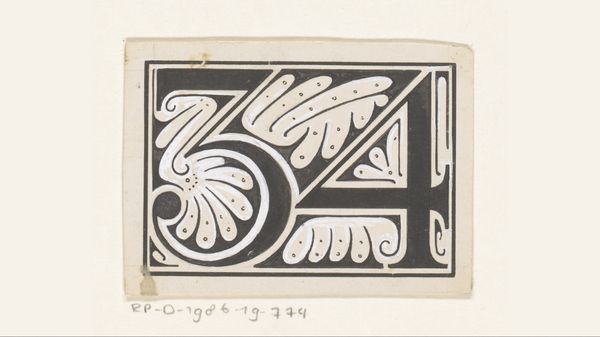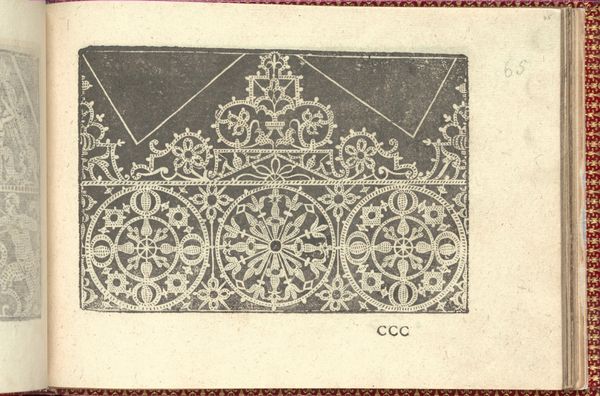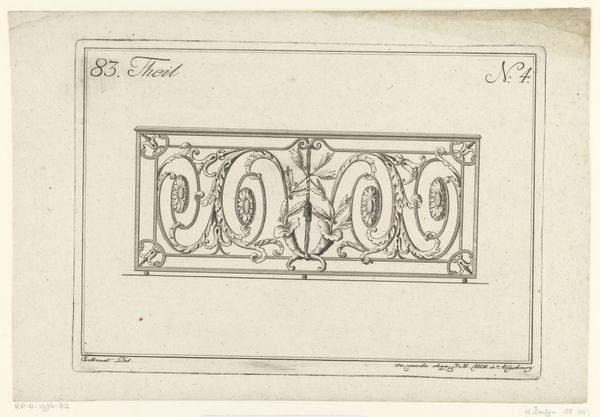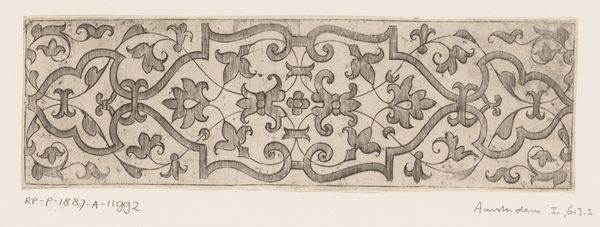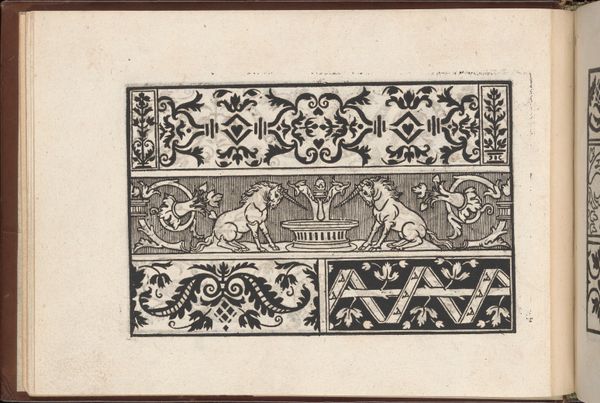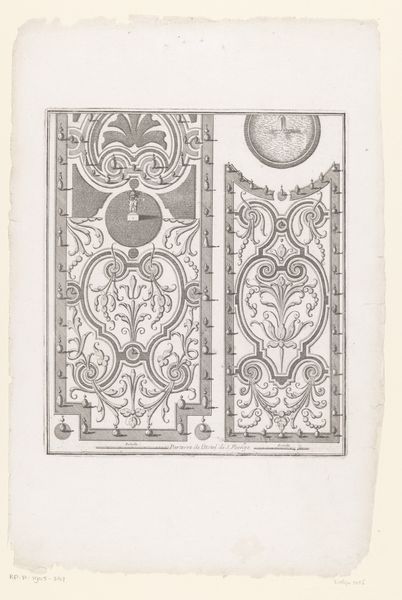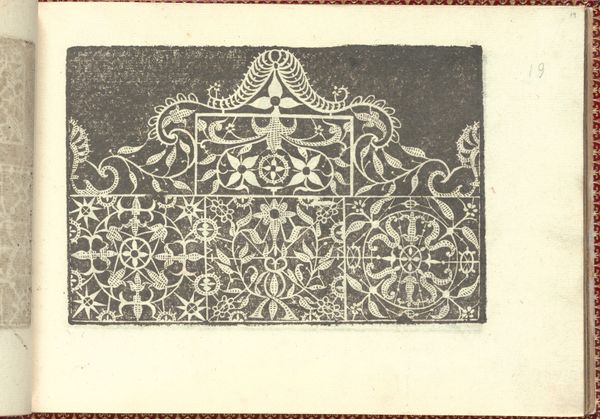
drawing, typography, ink
#
drawing
#
art-nouveau
#
ink line art
#
typography
#
ink
#
linocut print
#
geometric
#
pen-ink sketch
#
line
Dimensions: height 50 mm, width 69 mm
Copyright: Rijks Museum: Open Domain
Editor: So, this is Reinier Willem Petrus de Vries’s “Getal 20,” made with ink and typography in 1904, exhibiting the Art Nouveau style. It feels almost like a template for something bigger, like a book cover. What stands out to you about it? Curator: Well, immediately I’m drawn to the linocut aesthetic. In 1904, mass production through printmaking was radically changing access to imagery and information. De Vries’ choice to create this design in ink, mimicking that readily available format, elevates what was quickly becoming mundane, something mass produced, back to the level of high art. It questions the inherent value society placed on hand-made works versus those mechanically created. Editor: I see what you mean! The detail looks very intentional, almost hand-crafted... but the effect simulates something reproducible. How does the Art Nouveau style play into that tension? Curator: The stylized nature, those organic forms, typically evoke luxury and unique craftsmanship, hallmarks of the Arts and Crafts movement reacting *against* industrialization. Here, the contrast with the potentially mass-produced format complicates that association. Think about the labour involved in creating a hand-drawn linocut *effect* versus the relative ease of actual machine printing. Was he critiquing consumption? Suggesting a blurring of art and craft, challenging hierarchies? Editor: So he is almost pointing out the artificiality of perceived value, isn't it? By hand-making something that imitates mass production, is he drawing attention to how we value art based on how it’s made and distributed? Curator: Precisely! And perhaps how easily those perceptions can be manipulated by material means. Consider also the consumption of printed material. Were such pieces designed as a form of critique or promotion, reflecting evolving commercial markets? Editor: I hadn't thought about the economic context. Now I’m considering how deeply materials and methods affect how we interpret art’s purpose and value! Curator: It shows the potential radicality embedded within artistic practices.
Comments
No comments
Be the first to comment and join the conversation on the ultimate creative platform.
